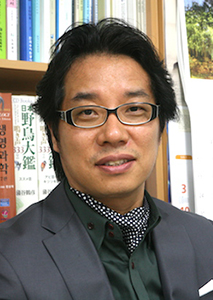
APRIL is the cruelest month, breeding
Lilacs out of the dead land, mixing
Memory and desire, stirring
Dull roots with spring rain.
T.S. Eliot wrote his poem as April depicting ‘the cruelest month.’ Is April really cruel? April should represent rebirth and youth of life with a full of energy. When he sees the new life that go through the world being like the wilderness overcoming the competition of survival and many adversities TS Elliot expressed April as ‘the cruelest month.’
Rachael Carson also expressed her concern of April as the cruel month in her book, Silent Spring. Spring must be frenzied and dynamic, but in April it will become reticence due to the use of insecticides. Polluted insects are consumed by birds that make thin eggshells so that the overall population in spring are declining and eventually going extinct. Unless it does not make a fuss with birds singing and reproducing, and the flowers not blooming the spring should be in silence. In her book we appreciate the circle of life and members in nature are connected.
April must be a beautiful season in which creatures are in full activities and this should not be only limited to creatures in nature. It is because climate changes give various messages to our environment. Phenology, which records and observes the activities of species in the season, is attracting attention as a new field of research.
This is because the rise in atmospheric temperature to global warming leads to changes in season of flora and fauna. The plant and animal activities in spring according to local environment illuminate the way of life according to the changing global temperature by predicting the biological response to climate change.
Plants of seasonal observations include cherry blossoms, apricots, forsythia, rhododendron, as well as acacia, peach, pear, cosmos, ginkgo, maple, and more than 10 species familiar to us are on the list. Animals are recorded including swallows, skylark, dragonflies, and cicadas as well as snakes and frogs that are sensitive to temperature changes in spring time. Observing and recording them are important in understanding climate change thus providing a clue as to how to respond our ecosystem to rising global temperatures.
Fortunately, in Korea, we have been observing the timing of flowering and animal activities’ responding to flowering time long before global warming was mentioned in 1980s. Seasonal records of biological species are underway at 74 meteorological stations and data as old as 1923 onwards for Seoul observatories.
Yeouido Spring Flower Festival just started. In Yeouido, standard cherry tree of Seoul is located at the south gate of the National Assembly along with many other cherry trees. The tree is expected to act as a living witness to Seoul’s climate change in the future. These are very rare records only Korea and Japan in the world.
The biographical record observations that have been preserved in the past are the answers to the current climate change. Our spring should not be silent. It is our responsibility to make nature as resilient and as sustainable. The vast observations to change in nature are so precious.
Professor Lee Sang-don received his Ph.D. from University of Washington, School of Environmental and Forest Sciences and B.S. at Seoul National University in Forest Resources. He was visiting professor at Boston University and Tokyo University.

